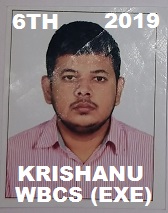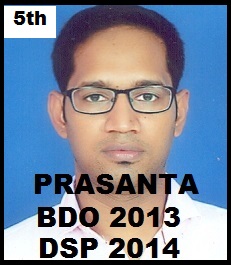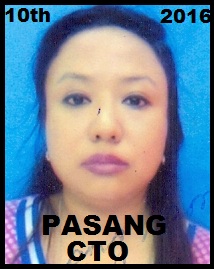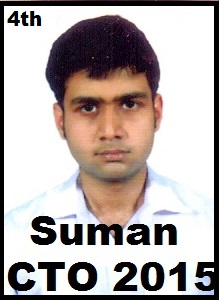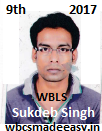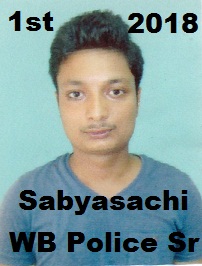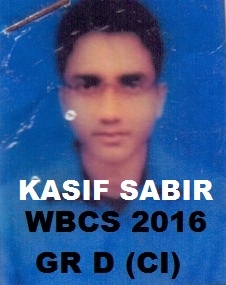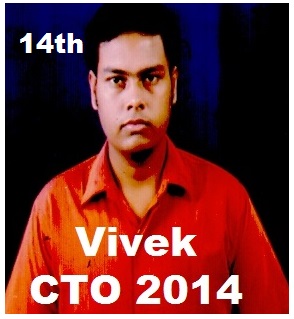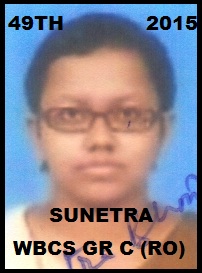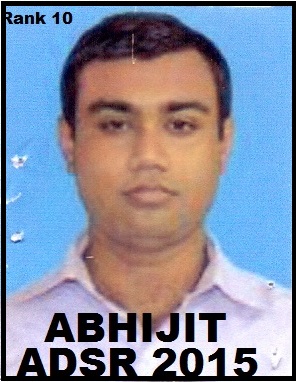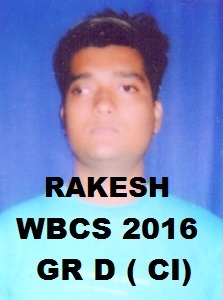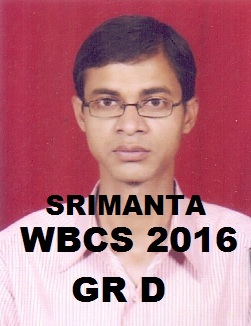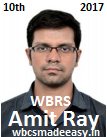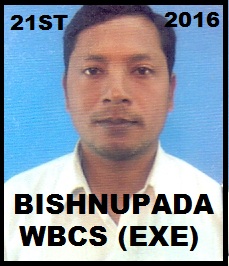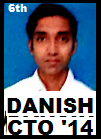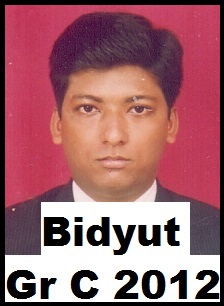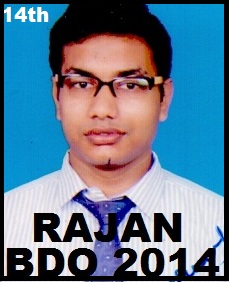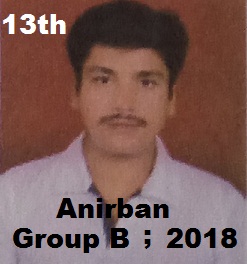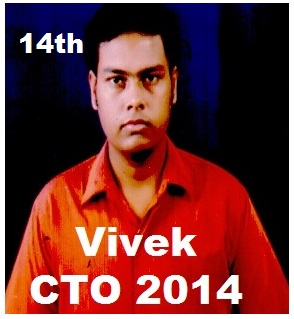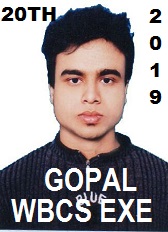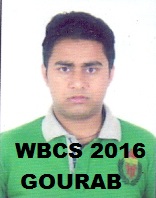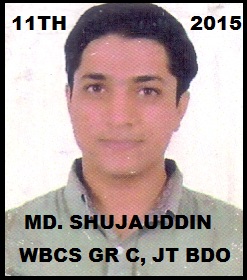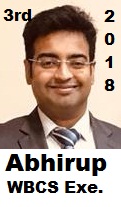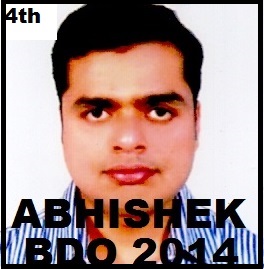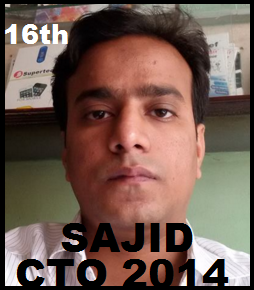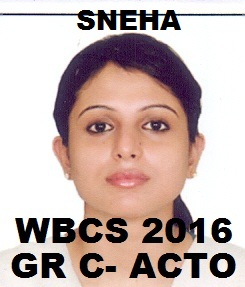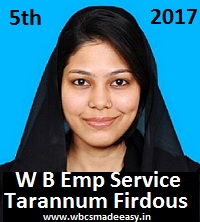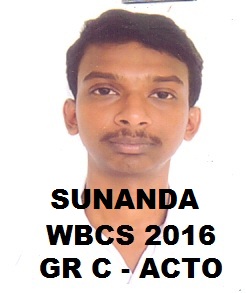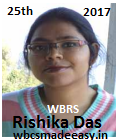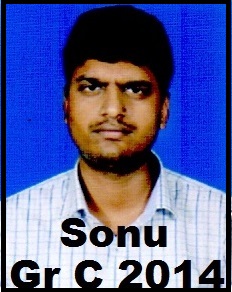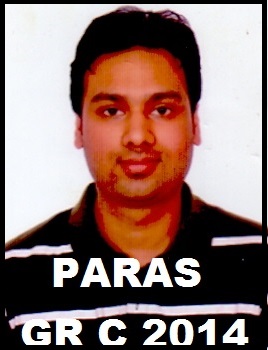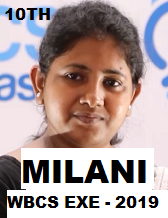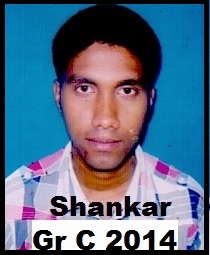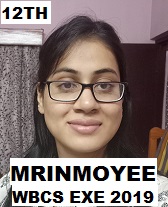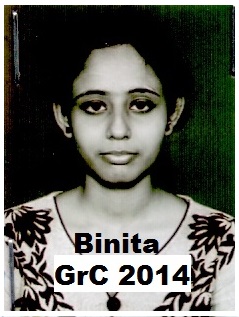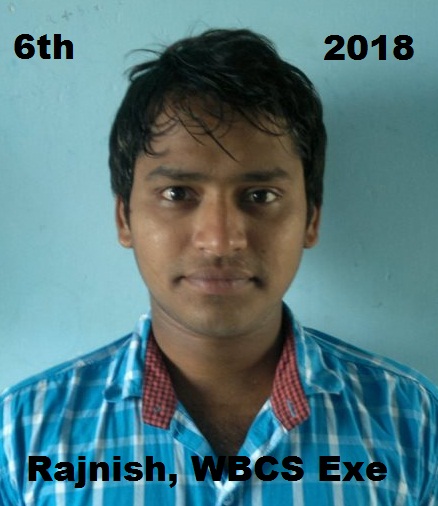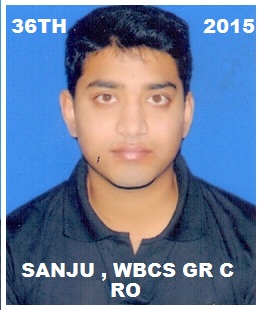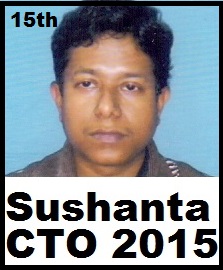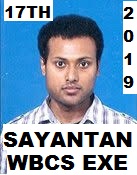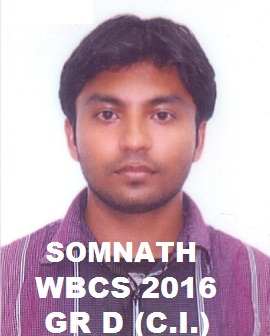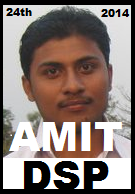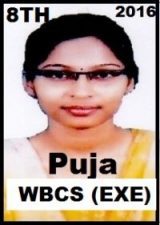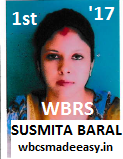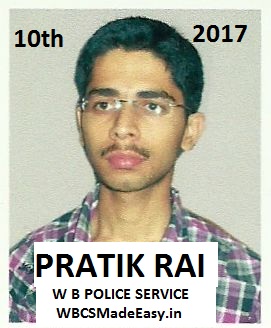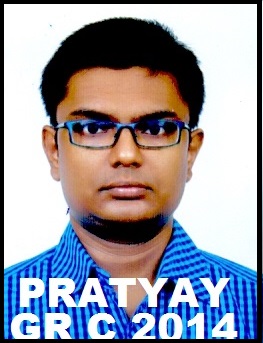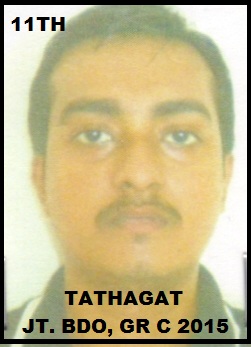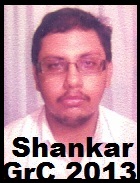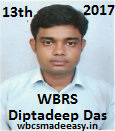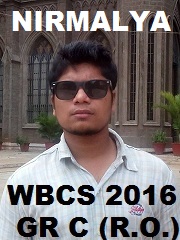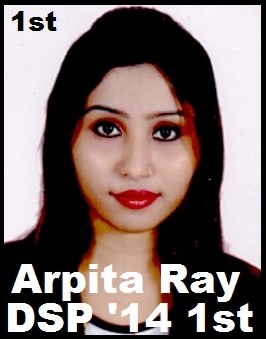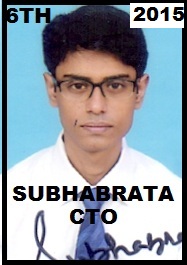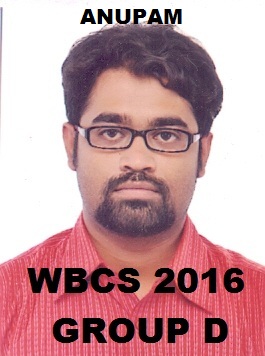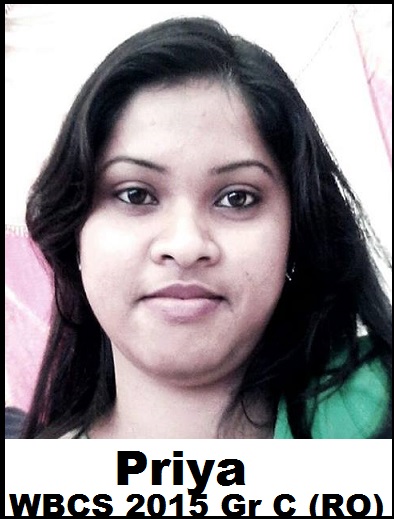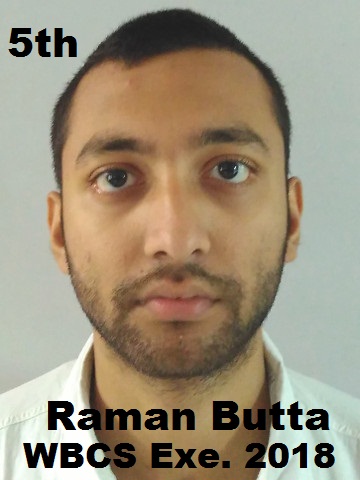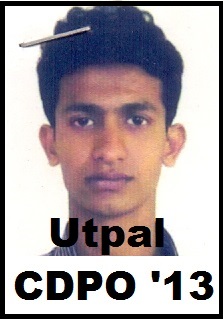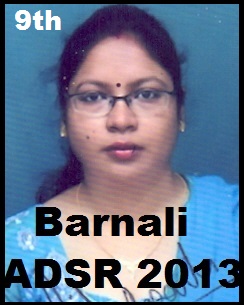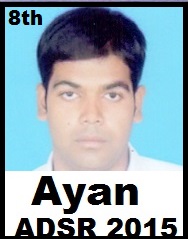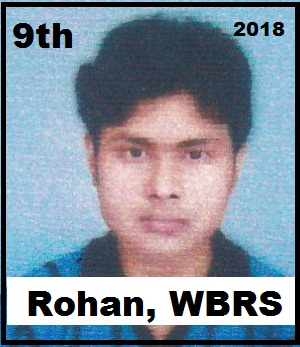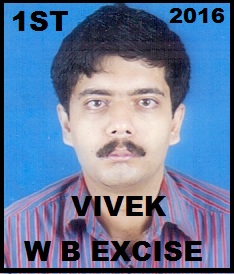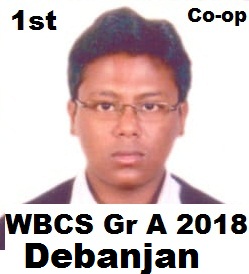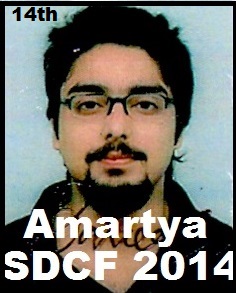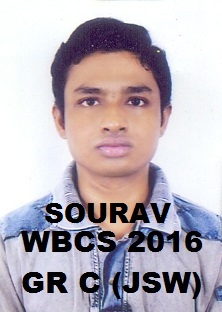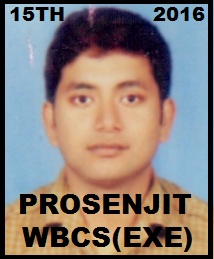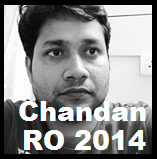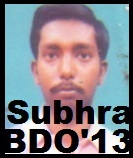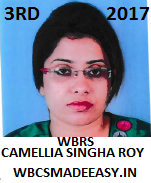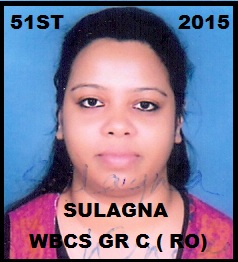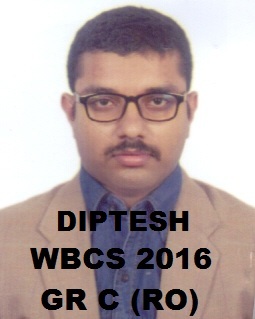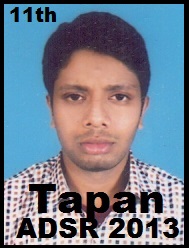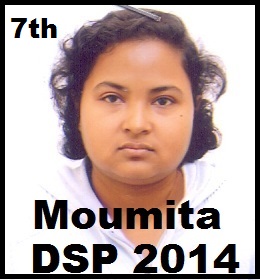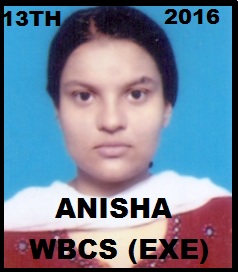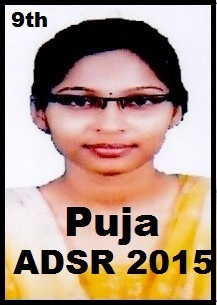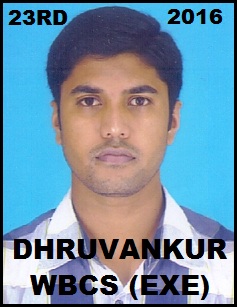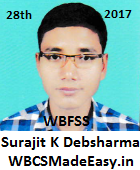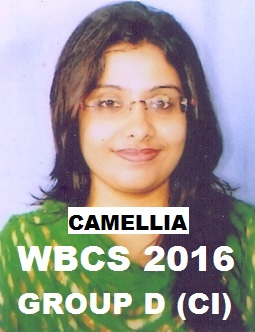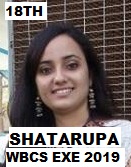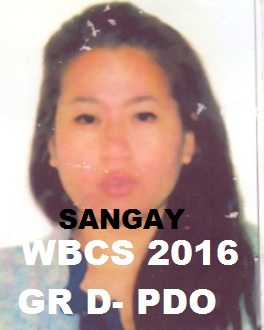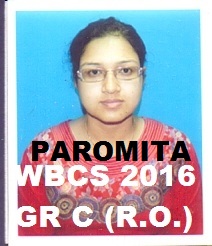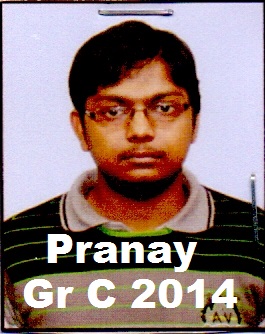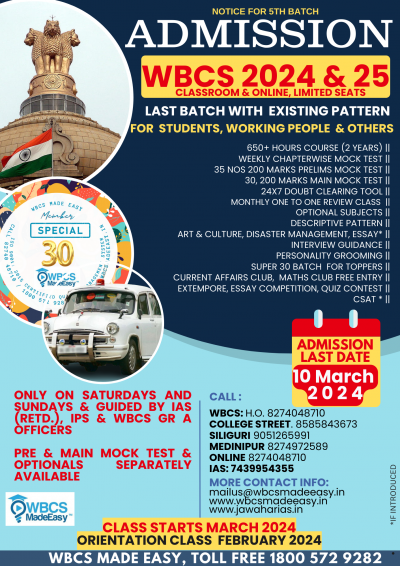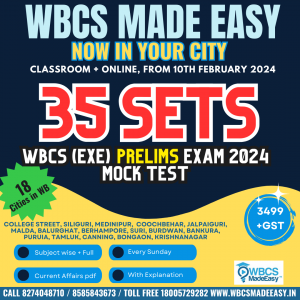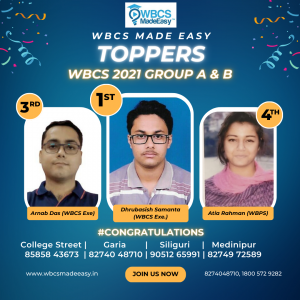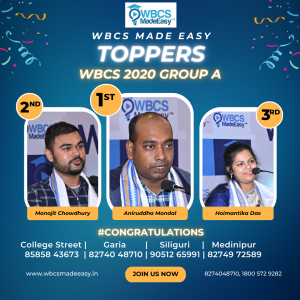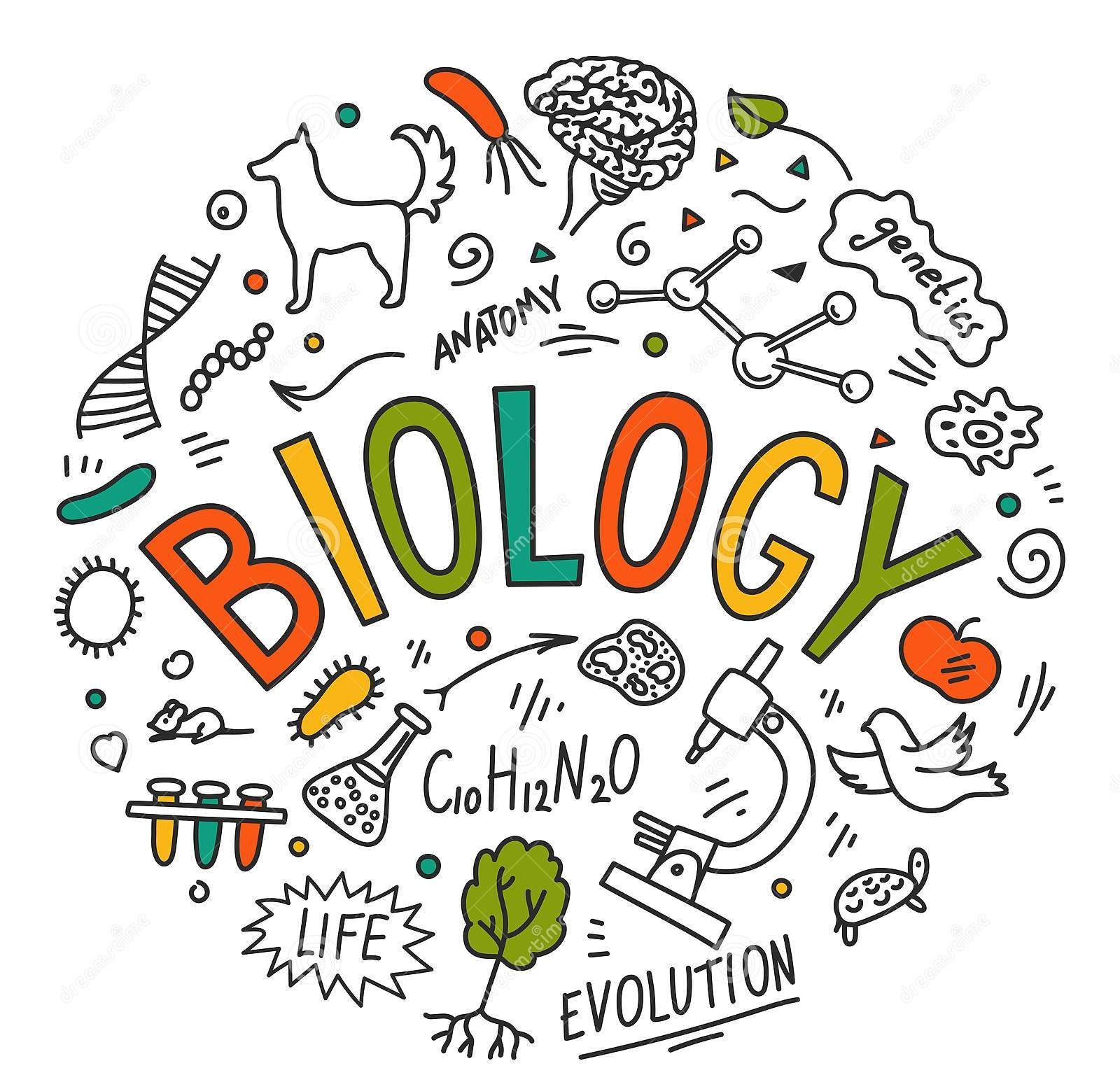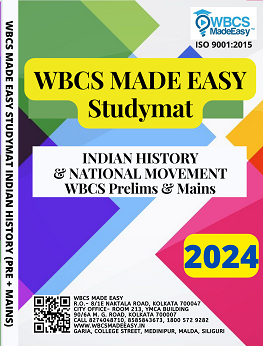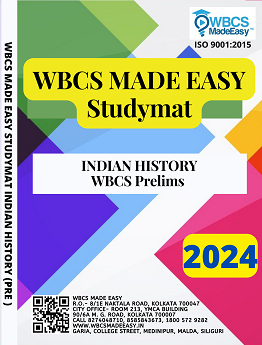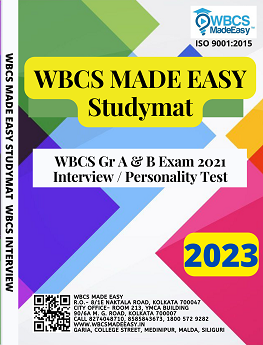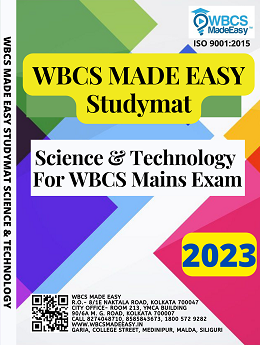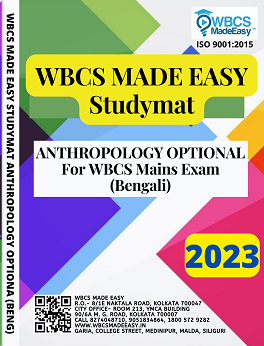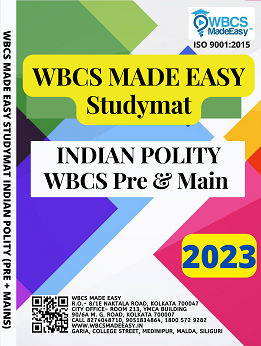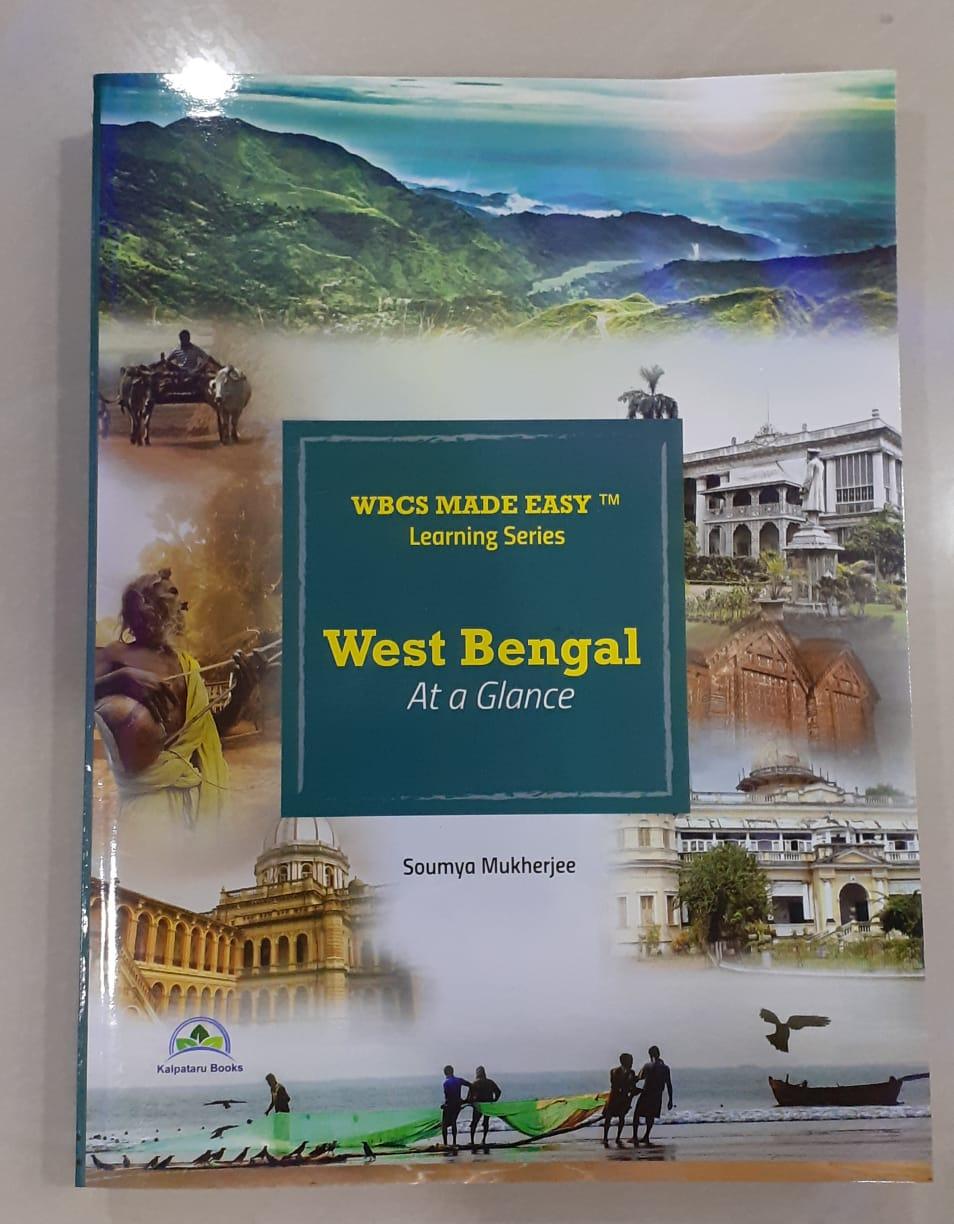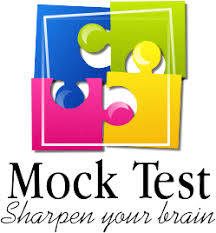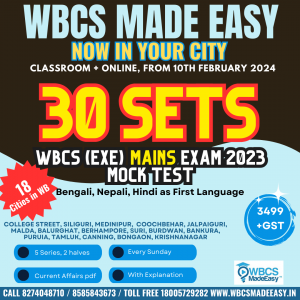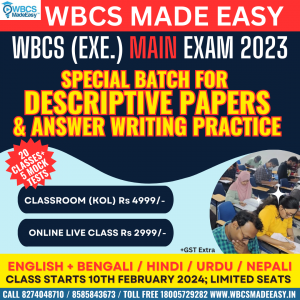Science Environment And Technology – Yearwise Questions – Biology – W.B.C.S. Mains Examination.
THE ANSWERS ARE MARKED IN BOLD.Continue Reading Science Environment And Technology – Yearwise Questions – Biology – W.B.C.S. Mains Examination.
WBCS Main Question Paper – 2019
- The black foot disease primarily occurs due to toxicity of
(A) Fluoride
(B) Cadmium
(C) Arsenic
(D) Lead - The following virus is water borne:
(A) Hepatitis A
(B) Hepatitis B
(C) Hepatitis C
(D) Hepatitis E - The following is not a macronutrient:
(A) Mg
(B) Ca
(C) Fe
(D) K - A genetically engineered form of brinjal, known as the Bt-brinjal, has
been developed, the objective of this is
(A) to improve its taste and nutritive qualities.
(B) to make it pest-resistant.
(C) to make it drought-resistant.
(D) to make its shelf-life longer - Proteins are composed of
(A) vitamins
(B) carbohydrates
(C) α-amino acids
(D) mineral salts - The following organism is an endosymbiont:
(A) Anabaena
(B) Azatobacter
(C) Clostridium
(D) Nitrobacter - In plants, water supply is due to
(Capillary action)
(A) osmosis
(B) imbibition
(C) guttation
(D) adhesion force - In which form does the food transported in plants?
(A) Sucrose
(B) Fructose
(C) Glucose
(D) Lactose - Indusium is found in
(A) algae
(B) moss
(C) ferns
(D) cycas - Which of the following is not vestigial in man?
(A) Tail vertebrae
(B) Nails
(C) Nictitating membrane
(D) Vermiform appendix - Kupffer cells are present in
(A) Pancreas
(B) Liver
(C) Thyroid
(D) Small intestine - In blood, CO is transported majorly as
(A) C0 as such
(B) Sodium Carbonate
(C) Bicarbonate
(D) Carboxy hemoglobin - Which is correctly matched?
(A) Apiculture – Honey bee
(B) Pisciculture – Silk moth
(C) Sericulture – Fish
(D) Aquaculture – Mosquito - The vitamin which is essential for blood clotting is
(A) vitamin – A
(B) vitamin – B
(C) vitamin – C
(D) vitamin – K - Which of the following is the largest gland in an adult man?
(A) Thymus
(B) Liver
(C) Thyroid
(D) Pancreas - Protein folding is a process in which a polypeptide folds into
(A) 2-D structure
(B) Globular form
(C) 3-D structure
(D) Linear form - Who described the structure of DNA double helix?
(A) Peter Mitchell
(B) Andre Jagendorf
(C) Ernest Uribe
(D) Watson and Crick - Which of the following vitamin is water soluble as well as an
antioxidant?
(A) Vitamin – B1
(B) Vitamin – A
(C) Vitamin – D
(D) Vitamin – C - ‘Adaptation’ of eyes in dark due to
(A) depletion of vision pigment in rods
(B) depletion of vision pigment in cones
(C) repletion of vision pigment in rods
(D) repletion of vision pigment in cones - A man of blood group-A marries a woman of blood group-AB, which
type of progeny would indicate that man is heterozygous?
(A) O
(B) B
(C) A
(D) AB - Which of them contains all the information required to fold the
polypeptide chain in its 3-D structure?
(A) DNA sequences
(B) RNA
(C) Histone protein
(D) Amino acid sequences - Name the RNA molecules which is used to carry genetic information
copied from DNA?
(A) tRNA
(B) mRNA
(C) rRNA
(D) snRNA - Name the disease caused by the deficiency of Niacin.
(vitamin B3)
(A) Pellagra
(B) Rickets
(C) Scurvy
(D) Pernicious anemia - Aspirin is a/an
(A) antibiotic
(B) antiseptic
(C) antipyretic
(D) None of the above - Which of the following vitamin serves as a hormone precursor?
(calcitriol hormone)
(A) Vitamin – C
(B) Vitamin – A
(C) Vitamin – K
(D) Vitamin – D - Which of the following is not a component of the nucleus?
(A) Chromosome
(B) Nucleolus
(C) Cytoplasm
(D) Nuclear envelope
WBCS Main Question Paper – 2018
- Which is the most balanced diet ?
a) Rice
b) Milk
c) Meat
d) Fish - Carbohydrate stored in the body as
a) Glucose
b) starch
c) glycogen
d) sucrose - Quinine is extracted from the plant of
a) Poppy
b) Cinchona
c) Sandle wood
d) Palm - The human eye forms the image of an object at is
a) retina
b) cornea
c) iris
d) None of the above - The normal blood pressure of human beings should remain in the range
of
a) 120/ 80 mm
b) 110/ 70 mm
c) 140/ 80 mm
d) 110/ 60 mm - Universal recipient blood group is
a) AB
b) O
c) B
d) A - In medicine bottles containing capsules and tables, a pouch of SiO gel
is kept
a) to kill bacteria
b) to absorb bacteria
c) to keep bottle warm
d) to absorb moisture - Which one of the following is considered as good cholesterol ?
a) VLDL
b) LDL
c) HDL
d) Triglycerides - Goiter is caused by the deficiency of
a) Vitamin A
b) Vitamin D
c) Iodine
d) None of the above - Plant absorbs dissolved nitrates from soil and converts them into
a) free N
b) urea
c) ammonia
d) proteins - The heart rate of adult persons should remain in the range of
a) 50-60 times per minute
b) 70-80 times per minute
c) 40-50 times per minute
d) 90-100 times per minute - The method by which desired characters of two plants can be combined:
a) Cutting
b) Layering
c) Budding
d) Grafting - Which organ is not controlled by autonomic nervous system?
a) Heart
b) Uterus
c) Glands
d) Eyes - Blood is filtered in the body through
a) Liver
b) Kidney
c) Lungs
d) None of the above - Chlorophyll contains
a) Zinc
b) Iron
c) Magnesium
d) Cobalt - White lung cancer is caused by
(A) Asbestos
(B) Silica
(C) Paper
(D) Textile - In photosynthesis, chlorophyll of green plants reacts with CO and
H O in presence of sunlight to generate
(A) N
(B) O
(C) H
(D) Cl - The scavengers of the earth is
(A) Bacteria
(B) Viruses
(C) Algae
(D) Fungi
WBCS Main Question Paper – 2017
- Which one of the following clay has the highest cation exchange
capacity (CEC) ?
(A) Bentonite
(B) Halloysite
(C) Ball clay
(D) China clay - The diameter of a human hair is about
(A) 50 µm
(B) 50 nm
(C) 100 µm
(D) 100 nm - Young of cockroaches is called
(A) Ephyra
(B) Nymphs
(C) Maggot
(D) Juvenile - The study of the microscopic structure of tissues, is called
(A) Orology
(B) Osteology
(C) Histology
(D) Seromology - Ornithology is the study of
(A) Mammal
(B) Bat
(C) Fishes
(D) Birds - Leaf spot disease of rice is caused by
(Cochliobolus miyabeanus)
(A) Fungus
(B) Bacteria
(C) Virus
(D) None of the above - Black heart of potato is due to
(A) deficiency of copper
(B) deficiency of boron
(C) deficiency of oxygen
(D) deficiency of potassium - The cell wall of xylem cells is rich in
(A) Starch
(B) Protein
(C) Lipid
(D) Lignin - Growth movement in plant due to light is called
(A) Thigmotropism
(B) Phototropism
(C) Geotropism
(D) Hydrotropism - Bacteria was discovered first by
(A) Leeuwenhoek (1676)
(B) Louis Pasture
(C) Robert Hook
(D) Robert Koch - Which of the following is used as bio-fertilizer ?
(A) Azolla
(B) Urea
(C) Bagasse
(D) Clostridium - Red colour of red sea is due to
(blue-green algae)
(A) Moss
(B) Bacteria
(C) Fungi
(D) Algae - Who is known as father of taxonomy ?
(A) Angler
(B) Aristotle
(C) Linnaeus
(D) Charles Darwin - Spermology is the study of
(A) Leaf
(B) Pollen grain
(C) Fruit
(D) Seed - Vitamin B12 is also known as
(cobalamin)
(A) Pyridoxine
(B) Ascorbic acid
(C) Riboflavin
(D) None of the above
WBCS Main Question Paper – 2016
- ‘Equus Caballus’ is the scientific name of –
(A) Cow
(B) Horse
(C) Cat
(D) Tiger - Rosy Periwinkle gives the drug for –
(A) malaria
(B) blood cancer
(C) hyper tension
(D) anaemia
WBCS Main Question Paper – 2015
- The deficiency of cobalt causes the deficiency of
(A) Vitamin B2
(B) Vitamin B6
(C) Vitamin B12
(D) Vitamin C
- Lead blocks the biosynthesis of
(A) Muscle protein
(B) Myaglobin
(C) Haemoglobin
(D) Ossein - Single cell animals reproduce by
(binary fission)
(A) Fission
(B) Fusion
(C) Budding
(D) Regeneration - The basic unit of life is
(A) Nucleic acid
(B) Protein
(C) Gene
(D) Lipoprotein - The amino acids are basis units of
(A) Lipids
(B) Hormones
(C) Proteins
(D) Vitamins - Chemically hormones are
(wrong options)
(A) Amino Acids
(B) Fatty Acids
(C) Proteins
(D) Steroids - Blood pressure is under control of
(adrenal gland)
(A) Adrenal
(B) Pituitary
(C) Thyroid
(D) Aldosterone - Animal with a single nostril is
(blowholes)
(A) Whale
(B) Tortoise
(C) Python
(D) Shark - In proportion of the size of the body which birds lay largest sized eggs.
(A) Ostrich
(B) Tinamons
(C) Vulture
(D) Kiwi - Among which of the following one lays eggs and does not produce young
ones directly
(Monotreme)
(A) Echidna
(B) Kangaroo
(C) Porcupine
(D) Whale - Location of particular gene on sex chromosome of autosomes can be
identified by
(A) Test cross
(B) Out cross
(C) Back cross
(D) Reciprocal cross - In vitro fertilisation is a technique that involves transfer of which of the
following in the fallopian tube?
(A) Zygote only
(B) Embryo up to 8 cell stage
(C) Embryo of 32 cell stage
(D) Either zygote or embryo up to 8 cell stage - Which type of cells are involved in allergic response
(A) Basophils
(B) Mast cell
(C) Fibroblast cell
(D) Both (A) and (B) - All are Oncogenic virus except
A) HIV
B) Varicella Zoster Virus
C) Influenza Virus
D) Hepatitis-B - Which of the following is a congenital anaemic disorder?
A) Thalassemia
B) Sickle cell anemia
C) G-6 PD deficiency
D) All of the above - Which of the vitamins acts as a free-radical inhibitor in human body?
(A) Vitamin B1
(B) Vitamin C
(C) Vitamin E
(D) Both C & E - Which of the following enzyme is present in saliva
(A) Pepsin
(B) Trypsin
(C) Ptyalin
(D) Chymotryspin - Human body requires some minerals for contraction of muscles
(A) Calcium, Potassium
(B) Iron
(C) Calcium, Sodium
(D) Calcium, Sodium and Iron - Robert Webster is known for his work associated with
(A) Cardiology
(B) Influenza virus
(C) HIV/AIDS
(D) Alzheimer - Competitive exclusion principle was also denoted by
(A) Darwin
(B) Gause
(C) Odum
(D) Wallace - Life in the earth started from
(A) DNA
(B) Polypeptide
(C) RNA
(D) Conjugate protein - Study of birds is also called
(A) Ornithology
(B) Nidology
(C) Phenology
(D) Ecology - Salmon fishes are also called
(A) Bony fishes
(B) Trout
(C) Cod
(D) Star fish - Malarial parasite could best be obtained from a patient
(A) One hour before rise of temperature
(B) In state of shivering
(C) When temperature come normal
(D) 4 hours after the temperature reaches normal - Malignant malaria is caused by
(A) Plasmodium ovale
(B) Plasmodium falciparum
(C) Plasmodium vivax
(D) Plasmodium malarie - Essential fatty acids are lowest in
(A) Fish liver oil
(B) Sunflower oil
(C) Vegetable oil
(D) Coconut oil - Highest biological value is from –
(A) Eggs
(B) Milk
(C) Soyabean
(D) Meat - During pregnancy, vaccination can be given against all these diseases
except –
(A) Hepatitis
(B) Typhoid
(C) Mumps
(D) Hepatitis -B - Tiger mosquitoes are
(A) Anopheles
(B) Culex
(C) Aedes
(D) Mansoides - Process of cell division can take place by
(A) Heterosis
(B) Fusion
(C) Mitosis
(D) None of these - The following element is not a constituent of fertilizer.
(A) N
(B) P
(C) S
(D) K - Essential amino acid may also be called
(A) Vitamins
(B) Hormones
(C) Steroids
(D) Enzymes
WBCS Main Question Paper – 2014
- In human beings, the number of chromosomes in an ordinary cell is
(A) 46
(B) 48
(C) 50
(D) 52
2. Islets of Langerhans are responsible for the secretion of
(part of pancreas)
(A) Testosterone
(B) Oestrogens
(C) Insulin
(D) Progesterone - The discovery of jumping genes is associated with the name of
(A) Sir Jagdish Chandra Bose
(B) Sir J. B. S. Haldane
(C) Dr. Barbara McClintock (1940)
(D) M. S. Swaminathan
4. The blood cells that defend the body against infections are
(A) white blood cells
(B) red blood cells
(C) platelets
(D) erythrocytes
5. The following is an example of a marsupial
(A) Whale
(B) Bat
(C) Mole
(D) Kangaroo
6. A terminator gene in an organism
(A) kills the organism
(B) switches off metabolism
(C) makes the organism sterile
(D) terminates all protein pathways
7. A magic bullet is a
(A) bullet that kills a person magically
(B) drug that selectively targets a disease without other effects
(C) guided missile
(D) high magnification microscope - DNA was discovered by
(University of Cambridge in 1953)
(A) Hargovind Khorana
(B) James Watson and Francis Crick
(C) Francis Crick and Alexander Fleming
(D) James Watson and Hargovind Khorana
9. Natural source of O2 in environment is
(A) Respiration
(B) Transpiration
(C) Photosynthesis
(D) Combustion
To know more about W.B.C.S. Preliminary Examination Mock Test – Click Here.
To know more about W.B.C.S. Main Examination Mock Test – Click Here.
Please subscribe here to get all future updates on this post/page/category/website

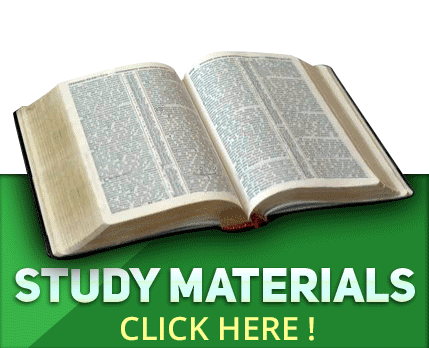
 +919674493673
+919674493673  mailus@wbcsmadeeasy.in
mailus@wbcsmadeeasy.in


